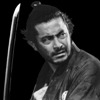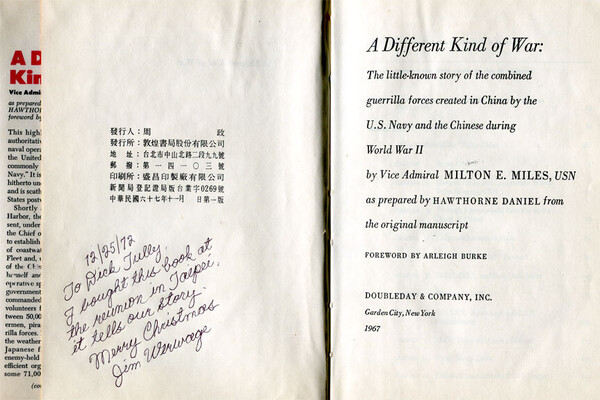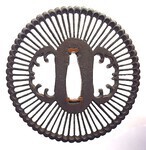Leaderboard
Popular Content
Showing content with the highest reputation on 11/29/2020 in all areas
-
Hi Tim and Dave, All of the Tully group came together in a box to the Good Will store, many of the it items are named including his Good Conduct Medal and the trench knife. The U.S. Naval Group China (S.A.C.O.) served behind the lines with the Chinese. I sent for Tully's records from the National Archive in St. Louis. He was entitled to everything in the group. The knife is named to Tully. Dick6 points
-
Dear All. A confession of sorts. Many years ago, (pre internet if you can believe such a time existed), I decided to make my own mekugi nuki. All I had to go on was an illustration in Stone's Glossary so off I went. Found some nice brass and built my own, threaded punch and all. It turned out well and I was quite pleased with myself. It was some years before I came across another Japanese one and realised that mine was a bit of a beast. It is beside a conventional one in the photo and you can probably see it's more appropriate for cracking coconuts than getting the mekugi out. However I have to say I have yet to come across a mekugi that can resist it! 😀 One or two visiting collectors have blanched a little when I get it out to dismantle their sword. All the best.4 points
-
For the price, I take it at once 🤣😂 https://www.aoijapan.com/tanto-masafusanot-guarantee/2 points
-
Another disturbing feature of many of these fake swords is they seem to more often than not copy the " Hada Tatsu" style of Ji-hada . Then, even when a legitimate mixed metal type Hada from the Meji or Showa era is presented to the NMB it almost immediately falls suspect as being a Chinese reproduction ! I personally find prominent Itame/Mokume Hada's used for forging Nihonto to be quite attractive of all era's, only to be somewhat diminished by these pathetic modern fakes!! And to be selling for how much...Seriously!!! Dave M.2 points
-
Here is a tsuba purchased earlier this year from the NMB For Sale section off Tom (LEPORELLO). It is not big being only 64 x 60 x 4 and I would have liked a katana sized example but for all that think that this one is a great piece in showing the great skill of the brass wire inlay artisan. I am interested in the opinions of other members here about these thoughts which are about these great skills and the ability to chisel such fine, convoluted channels, twisting and turning to create this design and then to inlay the fine brass wire into such twisting channels. Pretty amazing work for mine ? And their regularity and evenness is impressive. The patience and skill producing well executed nanako is of course possibly the ultimate. There are so many ways to appreciate the artistry and history of tosogu. Roger j1 point
-
These types of atrocities are best suited to stirring the excrement in the bottom of a chamber pot.1 point
-
I think it was also a fad. It was apparently first developed (officially) by the Soshu tradition and then copied by others. If it had been so bad, I don’t think it would have stuck, especially during the Sengoku Jidai. And unless the first one was indeed a mistake, the others weren’t. Hitatsura creates tobiyaki, but the type of blade you seem to describe isn’t unheard of either.1 point
-
No i don't think so Dave. There is big difference. But Fake is Fake. 😉1 point
-
1 point
-
Bruce I think it is 'i'512. I think he is Katsumura Masakatsu of Ibaraki, which is north of Tokyo. Here is the number of my Kunishiro, also RJT and also north of Tokyo in Aomori....maybe the same RJT blade inspector guy collected both blades to take back to Tokyo for polishing/mounting and gave them his stamp? I say this as your 'i' is from Ibaraki and my 'o' is from Aomori...both numbers 5 and 1 seem to match in font and size...just saying.1 point
-
I don't know if this is appropriate to be posted here since this "trench knife" is half Japanese, half Chinese and used by an American who fought the Japanese in China. If this is not appropriate please delete. This Knuckle knife is made from the hilt of a Japanese army dress saber with the blade, scabbard and hanger from a Chinese dagger. The pommel has the name R.A. Tully and the date 1945 for his service in China. I believe the EGA on the pommel was added for a reunion of S.A.C.O. members since it dates from the mid 1950's. The U.S. Naval Group China, S.A.C.O. had reunions from 1955 to 2015. The Chinese belt was with the group. The dealer I bought the group from said it came from a Good Will Store. Richard Arthur Tully served in Company D, First Battalion, First Marines, First Marine Division in July 1942. Tully participated in the landing operations and capture of Guadalcanal Island, British Solomon Islands. He was involved in offensive operations against enemy forces from 7 August until 21 December, 1942. The First Marine Division received the Presidential Unit Citation. He then participated in landing operations against Japanese forces at Cape Gloucester, New Britain where he participated in the capture of the Japanese airdromes. Tully was engaged in offensive and defensive operations against enemy forces from 29 December 1943 to April 23 1944. In March 1945 Tully joined the U.S. Naval Group China (S.A.C.O.) and he served in Calcutta, Hankow, Shanghai and with the Yangtze Naval Unit. The Yangtze Naval Unit attacked river and rail traffic and ultimately severed Japanese supply lines in central China. Platoon Sergeant Richard A. Tully was discharged from the United States Marine Corps on December 29th 1945.1 point
-
Hi Robert, Try Heavenly Warriors; The evolution of Japans Military, 500 - 1300 by William Wayne Farris. ISBN 0-674-38704-X It's a bit of an 'academic' read, but I found it very interesting. Good luck. Barrie.1 point
-
I would say, take any opinions given online here with a grain of salt, and in the mean time seek an in-hand opinion from a proper togishi. They'd know best as to whether or not this blade is worth the polish. I think it cannot hurt to find out at least. The nakago scares me a bit, but that could literally mean nothing as it doesn't affect if the polish will come out nicely or not.1 point
-
Very interesting! I suggest posting it on a dedicated militaria site such as Japanese Militaria for more input. Personally I love the collection you show here, and would like to see more about it. Sadly, bought at a "Good Will Store" is not a reliable provenance, and the old adage is "buy the blade not the story." Did this come with documentation.1 point
-
1 point
-
1 point
-
I love the tsuba, the nanako is excellent, [ not perfect ] the delineation of the seppa-dai is sharp and well done. They all look like good acquisitions. Namako [sea cucumber] and nanako (fish eggs) - fishy!🤓1 point
-
Not exactly a history book as it doesn’t read like one, but I would advise getting Papinot's Historical and Geographical history of Japan.1 point
-
This one was sold one hour ago for 847 EUR - around 1.000 Dollar. 🤣 https://www.egun.de/market/item.php?id=127763660 points





















